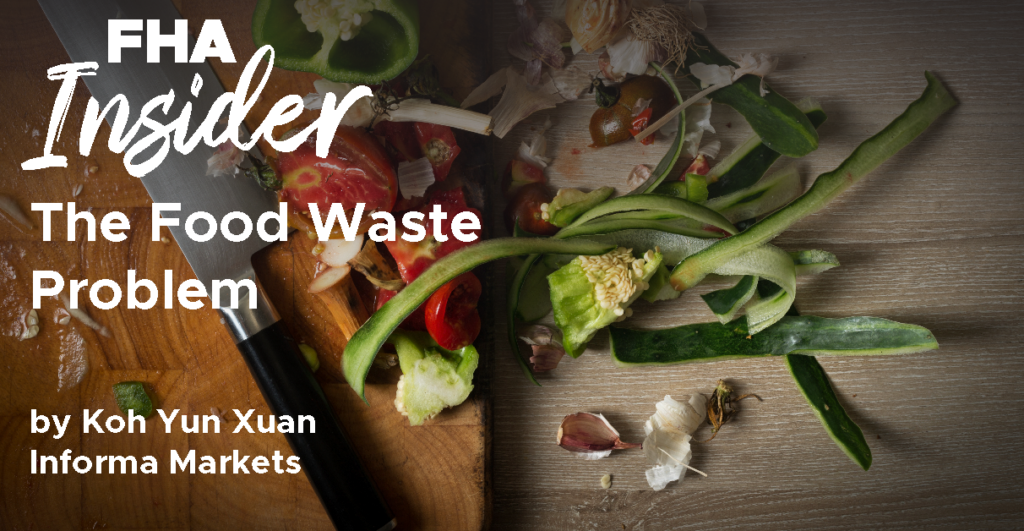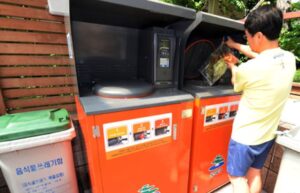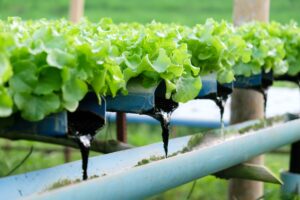
The mounting food waste problem is an urgent issue that threatens food security globally. In this article, we discuss the main drivers and sources of food waste and what governments, the food industry and technology start-ups are doing to tackle this problem.
The Food Waste Problem
Globally, the United Nations estimates that 14 per cent of the world’s food, valued at $400 billion, is lost on an annual basis before they reach retailers. An estimated 17% of food is wasted at the retail and consumer levels (UNEP, 2021).
In Southeast Asia, the amount of food waste is staggering. According to the National Environmental Agency, Singapore generated 744,000 tonnes of food waste in 2019. 40% of food waste generated each year was contributed by commercial and industrial enterprises.
Indonesia dumped between 115kg and 184 kg of food per capita each year. Food waste costs the country between US$14-40 billion a year in economic losses, or up to 5% of Indonesia’s GDP. In Bangkok, uneaten food makes up 46% of nearly 10,000 tonnes of solid waste collected by the city every day.
Main drivers and sources of food waste
At the wholesale and retail stage, food waste occurs due to temperature changes leading to spoilage, discarding food that do not meet aesthetic standards, packaging defects and over-supply.
In the food service sector, lack of flexibility in portion sizes, insufficient planning to forecast and order ingredients and consumers’ reluctance towards bringing leftover food home are all contributors of food waste. At the consumer level, households generate food waste by overpreparation of food, buying too much and discarding edible parts and leftovers.
Food wastage at an individual level leads to further wastage at a commercial level as it encourages supermarkets and F&B operators to order more than what’s needed, which in turn generates unnecessary waste.
Approaches to reduce food waste
Legislation
In Singapore, a landmark Resource Sustainability Act was enacted in October 2019 to give legislative effect to new measures aiming to reduce food waste. From 2024, large commercial and industrial food waste generators will be required to segregate their food waste for treatment. Such premises include large hotels and malls, and large industrial developments housing food manufacturers, food caterers and food storage warehouses.

South Korea’s food waste disposal bins are equipped with scales and Radio Frequency Identification (RFID) to weigh food waste as it is deposited and residents are charged using an ID card. (Image credit: The Korea Times)
Regarded as one of the most successful government initiatives to recycle food waste, South Korea established a “pay as you throw” policy requiring food waste to be discarded in biodegradable bags and charges a per household fee on the weight of the waste. As a result, South Korea now recycles more than 95% of its food waste, up from less than 2% in 1995. The food waste is processed to use as compost for urban gardens or animal feed or burnt to generate biofuel.
Food redistribution
Online marketplaces to redistribute surplus food have emerged in recent years. One example is TreeDots which connects suppliers with businesses by selling excess or imperfect food supply at lower prices. Another is treatsure which connects businesses and hotels with surplus food and groceries to consumers.
Food upcycling
Upcycling refers to using ingredients that would otherwise have been thrown away and turning them into or using them in new food products.
Dole, the world’s largest fruit and vegetable producer, upcycled 80% of “ugly” fruit that would otherwise be discarded in its Thailand farms. Some of its upcycling initiatives include turning banana leaves into packaging, developing snacks from unaesthetic vegetables and processing half-rotten produce in its biogas facilities.

Locally, CRUST Group uses surplus bread and fruit peels in their craft beers and fruit sparkling waters. Protein and fibre extracted from spent barley grains, a by-product of beer and malt production are the base of a noodle product from Kosmode Health. Singapore’s first urban insect farm, Insectta, rears black soldier flies to process food waste and develop insect-derived biomaterials such as chitosan, for both the pharmaceutical and cosmetic industries.
Innovation in agriculture
Scientists have been working to delay fruit ripening so that farmers can harvest fruits later to better optimize their flavour. With this technology, fruits will ripen more slowly and be less susceptible to damage. This reduces fruit spoilage and wastage during transportation, storage and after purchase and helps to prolong shelf life for customers.

Hydroponic farming is also picking up in Asia. It is the technique of growing plants using a water-based nutrient solution. This technique has the benefits of using less water and land. As plants are grown in a controlled environment, it reduces the exposure of crops to pests and disease, spoilage due to unpredictable weather patterns, therefore minimising food loss and wastage. However, large high-tech farms will need a lot of electricity to power its LED lights, ventilation systems and temperature control.
Technology innovation has huge potential in contributing to sustainable food systems that reduce wastage and stabilise food supply.
Do you have an innovative or sustainable solution to the food waste problem to showcase?
FHA – Food and Beverage returns next year on 23-26 April 2024 at Singapore Expo. With a line-up of leading global suppliers, industry professionals can anticipate the most extensive showcase of trending F&B and hospitality products and solutions, cutting-edge technologies for food & drinks manufacturing, and more at the mega event. Contact us to get involved.









